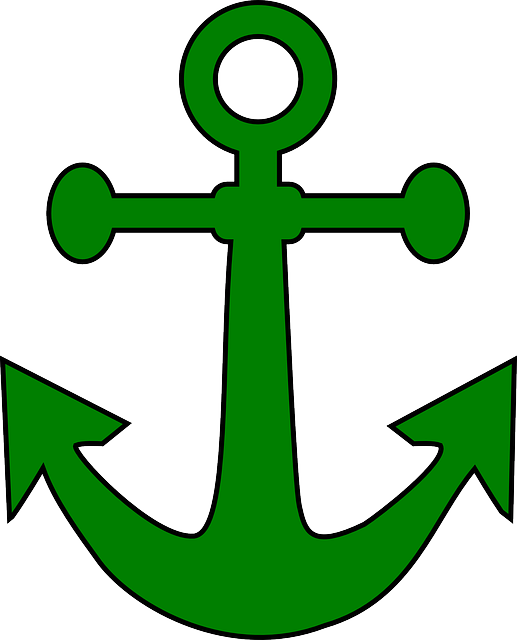Smart Internal Links for WordPress significantly enhance user experience and SEO by strategically placing relevant links within content. This involves optimizing anchor text, linking to related posts, and ensuring a logical site structure. By guiding users to valuable resources and signaling search engines about page connections, these links improve click-through rates, reduce bounce rates, and boost website authority. Advanced tools automate this process, providing data insights for continuous optimization and driving higher rankings. Tracking KPIs like CTR, page views per session, and average duration helps measure success.
Looking to elevate your WordPress site’s SEO with powerful internal linking? This comprehensive guide is your roadmap. We delve into the essence of smart internal links, why they’re crucial for search engine optimization, and how they enhance user experience. From optimizing site structure to choosing effective anchor text and leveraging advanced automation tools, you’ll discover best practices to create a robust smart internal linking strategy tailored for WordPress success.
- Understanding Smart Internal Links: Why They Matter for SEO
- Optimizing Your WordPress Site Structure for Effective Linking
- Best Practices for Creating High-Quality Internal Link Anchor Text
- Advanced Tools to Automate and Analyze Your Internal Link Strategy
- Enhancing User Experience with Strategic Internal Link Placement
- Measuring the Success of Your Smart Internal Linking Campaign
Understanding Smart Internal Links: Why They Matter for SEO

In the realm of WordPress SEO, smart internal links aren’t just about linking pages together; they are a strategic tool to enhance user experience and search engine visibility. These links go beyond simple hyperlinks, employing contextual relevance and semantic understanding to guide both users and algorithms efficiently across your website. By integrating smart internal links optimization into your content strategy, you create a harmonious network that allows visitors to navigate seamlessly while also signaling to search engines the importance of certain pages within your site’s structure.
A well-crafted smart internal links strategy can significantly impact your site’s performance. This involves identifying relevant content and strategically placing links that provide value to both the reader and the search engine crawlers. A tutorial on smart internal links for WordPress might cover topics like identifying anchor text, linking to related posts, utilizing keyword-rich anchors, and ensuring a natural flow of navigation. Ultimately, this method helps in improving click-through rates, reducing bounce rates, and boosting overall website authority, making it a game changer in the competitive world of digital marketing.
Optimizing Your WordPress Site Structure for Effective Linking

Optimizing your WordPress site structure for effective internal linking is a strategic move to enhance user experience and boost your website’s search engine optimization (SEO). A well-structured site allows you to create smart internal links, which not only guide visitors but also help search engines understand your content hierarchy. Start by organizing your pages into logical categories and ensuring a clear navigation menu. This structure forms the foundation for building meaningful connections between related posts through smart internal links tips.
Utilize keyword-rich anchor text when linking to specific pages within your site. For instance, instead of generic links like “click here,” use phrases that indicate the topic or benefit of the linked content. This practice not only aids users in understanding where they’re heading but also contributes to smart internal links strategy by signaling to search engines the relevance between pages. Prioritize linking to high-quality, relevant content within your site to maximize SEO benefits.
Best Practices for Creating High-Quality Internal Link Anchor Text

Creating high-quality internal link anchor text is an art that enhances user experience and search engine optimization (SEO) for your WordPress site. The goal is to craft anchor texts that are both descriptive and keyword-rich, providing a clear indication of the linked page’s content. Smart internal links tips include using specific keywords or phrases that accurately represent the destination page. For instance, instead of generic anchors like “click here,” opt for something like “read more about organic SEO strategies.” This approach not only aids users but also signals search engines about the relevance of the linked content.
A smart internal links tutorial would emphasize keeping anchor text concise and relevant. It’s best to keep it under 2-3 words, focusing on the main keyword or topic. Avoid using branded terms or unnecessary variations. Ensure that each link adds value by guiding users to related content, thereby reducing bounce rates and increasing time spent on the site—key factors in smart internal links SEO.
Advanced Tools to Automate and Analyze Your Internal Link Strategy

In today’s digital era, a well-crafted internal linking strategy is key to enhancing user experience and boosting SEO for any website, especially those powered by WordPress. Advanced tools now exist to automate and optimize this process, ensuring your smart internal links for WordPress are not just present but actively working for you. These tools offer powerful analytics features that allow you to analyze the performance of your existing internal linking structure, identify areas for improvement, and implement smart internal links tips tailored to your site’s needs.
By leveraging these advanced tools, you can streamline your internal linking workflow, from initial setup to ongoing optimization. A smart internal links tutorial or guide provided by these platforms can equip you with the knowledge to create strategic link placements that not only improve crawlability but also enrich user engagement. Through continuous monitoring and adjustments based on data-driven insights, you can achieve optimal smart internal links optimization, ultimately driving better search engine rankings and higher website traffic.
Enhancing User Experience with Strategic Internal Link Placement

Strategic internal linking is a powerful tool for enhancing user experience on WordPress websites. By carefully placing smart internal links throughout your content, you can guide users to relevant pages, encouraging deeper engagement and navigation. This technique not only improves usability but also plays a significant role in SEO by helping search engines understand the context and hierarchy of your website’s information.
A well-planned smart internal links strategy involves identifying key topics within your niche and linking related content together. For instance, if you’re writing an article about “WordPress Optimization,” you might link to other articles on your site that delve into specific aspects like “SEO Best Practices” or “Performance Tuning.” This creates a web of interconnected knowledge, making it easier for users to explore your website and discover valuable resources. A smart internal links tutorial could guide users through this process, offering tips on choosing anchor text, targeting the right pages, and ensuring a seamless user journey across your WordPress site.
Measuring the Success of Your Smart Internal Linking Campaign

To measure the success of your smart internal linking campaign on WordPress, keep a keen eye on key performance indicators (KPIs) that align with your SEO goals. Start by tracking the click-through rate (CTR) from internal links to gauge user engagement and interest in your content. A rising CTR indicates that your smart internal links are successfully guiding users to relevant pages, enhancing their experience.
Additionally, monitor page views per session and average session duration to understand how internal links impact user behavior. If you notice increased exploration of your site’s content and longer dwell times, it suggests that your smart internal linking strategy is optimizing for both user experience and SEO. Analyze these metrics over time using SEO tools tailored for WordPress to identify trends and make data-driven adjustments to your smart internal links optimization and strategy.
